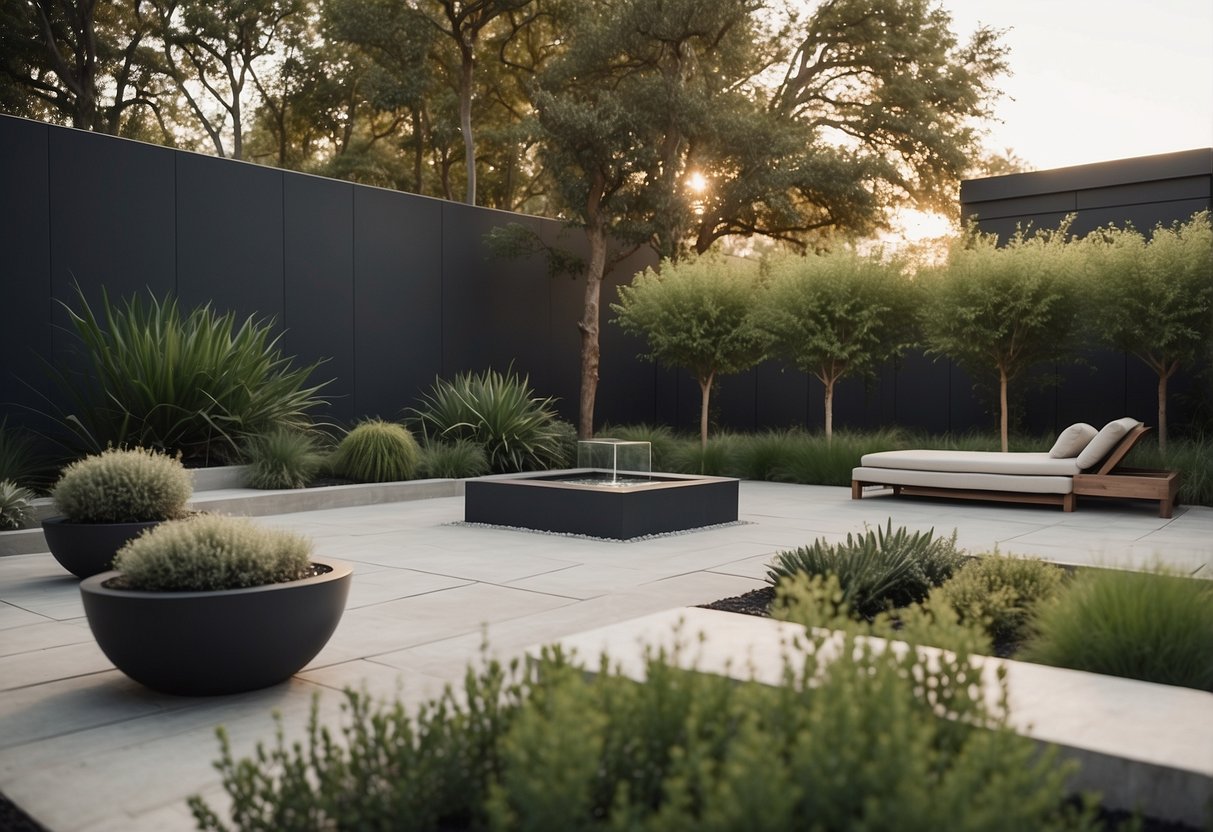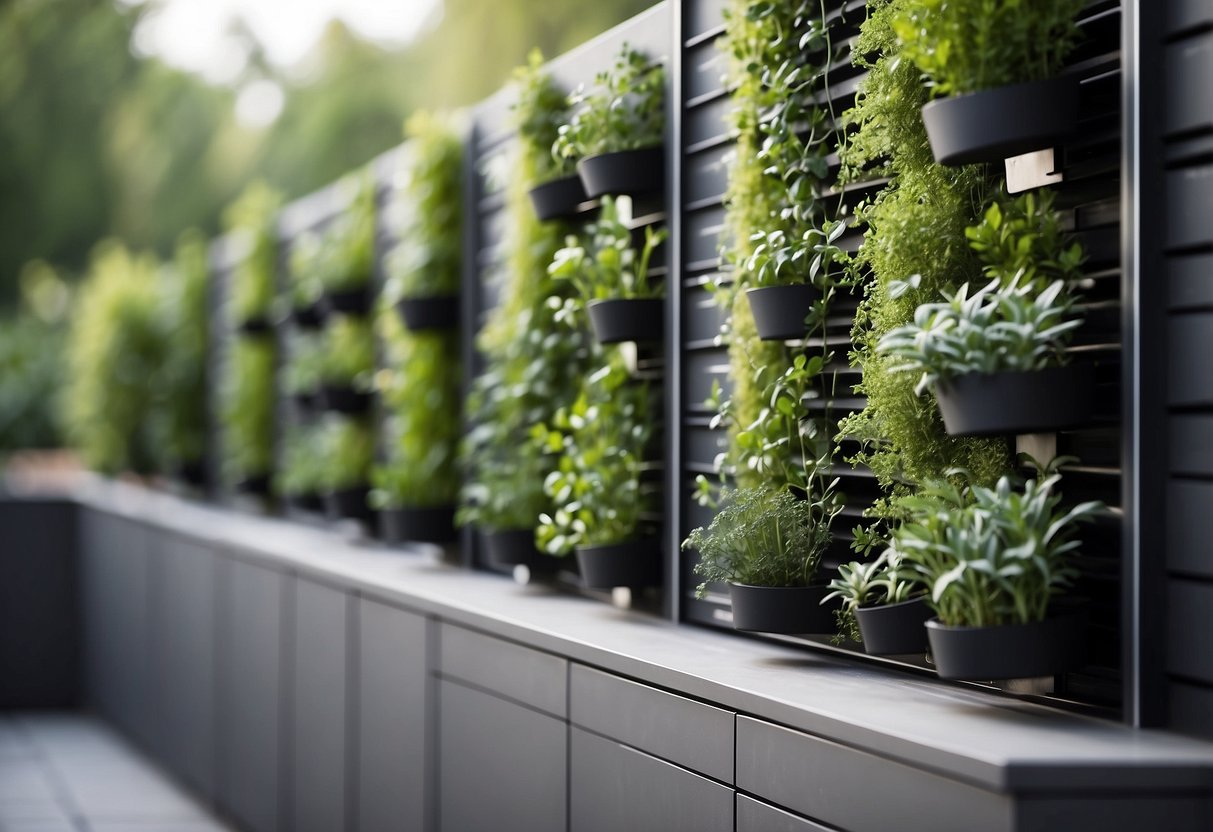Garden Ideas for New Builds: Creating Your Perfect Green Space
Creating a garden for a new build home is an exciting opportunity. It allows you to shape and design your outdoor space from scratch, reflecting your personal style and preferences. The blank canvas of a new build garden can be turned into a lush retreat for relaxation or a vibrant spot for social gatherings.

Wondering where to start with your new garden? You can explore various ideas, from incorporating naturalistic planting schemes to installing vertical gardens. With thoughtful planning, your new build garden can become a beautiful and functional space that enhances your home’s appeal.
1) Raised Vegetable Beds

Raised vegetable beds are a fantastic choice for your new garden. They offer better soil drainage, making it easier for your plants to thrive. You can also control the soil quality more effectively, which is great for growing vegetables.
Building your own raised bed can be simple and affordable. For example, try using cedar fencing and 2x4s, which are both durable and cost-effective materials. Raised beds can also be stylish, adding a neat and organized look to your garden.
Another idea is to use rocks or branches to create the borders of your raised bed. This can give a natural and rustic appearance to your garden. If you need more inspiration, check out these inexpensive DIY raised garden bed ideas.
2) Perennial Flower Borders

Perennial flower borders add vibrant color to your garden year after year. Choose plants that bloom in different seasons to keep your garden looking lively.
Consider astilbes for their pink and purple flowers. For borders, Dusty Miller is a great choice due to its silvery-white leaves and summer blooms.
For fall colors, think about chrysanthemums and snapdragons. Mix these with evergreen plants like Japanese maples and ferns to create year-round interest.
3) Garden Water Features

Adding water features to your garden can transform the space. A small pond or fountain creates a relaxing atmosphere. The sound of trickling water soothes and adds a natural element to your yard.
For a modern touch, consider a narrow garden pool with a monochromatic color scheme. Surround it with plants like evergreens and hostas for a sleek look. Check out more ideas for modern garden pools.
If you have a tight budget, simple DIY kits are available. You can easily create a small pond or a basic fountain that elevates your garden’s charm. Explore a variety of budget-friendly water features for inspiration.
From grand cascading waterfalls to simple bird baths, there are countless ways to introduce water into your garden. Each option can make your outdoor space more inviting and peaceful.
4) Vertical Herb Garden

A vertical herb garden is perfect if space is tight. You can use a sunny wall or fence to hang planters.
Try using a leaning trellis with hanging buckets. This adds both function and visual appeal.
Repurpose an Ikea bar cart into a mobile herb garden. Move it around to catch the best sun.
5) Sunken Patio Area

Adding a sunken patio area to your new build can create a cozy outdoor space. This design choice allows you to have a seating area that feels intimate and sheltered. By using retaining walls, you can define the space and add some charm.
Think about incorporating greenery around the patio. Plants and shrubs can soften the edges and make the area feel lush. For a modern touch, you can add built-in seating or even a sunken fire pit. This gives you a stylish and functional outdoor room.
You can also mix materials like wood, stone, and metal to create a unique look. Consider linking to these sunken design ideas for more inspiration. By tailoring your sunken patio area to match your style and needs, you can enjoy an inviting and personalized outdoor space.
6) Wildflower Meadow

Creating a wildflower meadow in your new garden is a fantastic way to attract pollinators like bees and butterflies. Choose a variety of native wildflowers such as purple coneflower, black-eyed Susan, and butterfly weed.
Removing your lawn before planting wildflowers is key. Try soil solarization to kill the grass, then sow your seeds and loosen the soil for better root growth.
Adding height with purple wild marjoram and spiked speedwell can give your meadow a more dynamic look. Enjoy the vibrant colors and bustling wildlife that a wildflower meadow brings to your garden!
7) Outdoor Lighting

Outdoor lighting can transform your garden into a magical space.
String lights are a simple way to add a warm glow. You can wrap them around trees or hang them along fences. If you don’t have electrical outlets outside, consider solar or battery-powered options.
Lanterns are another great choice. Hanging them from trees creates beautiful, flickering shadows and a cozy atmosphere.
Path lights are useful and stylish. Use them to outline flower beds or walkways, adding both safety and beauty to your garden layout.
Elevate your garden’s aesthetic with globe-shaped lights. These lights offer a unique, eye-catching alternative to traditional stake lighting.
8) Garden Decking

Garden decking can make your outdoor space more inviting. It’s perfect for entertaining guests or relaxing with your family.
You can use deck tiles for an easy DIY project. They’re cost-effective and simple to install.
Consider creating a tucked-away seating area to enjoy some quiet time.
Match the decking stain and fencing to keep the look cohesive in small spaces. For more inspiration on stylish garden decking, check out these stylish outdoor living spaces.
9) Fruit Tree Avenues

Adding fruit tree avenues to your new build garden can be both beautiful and practical. Picture walking through rows of apple, pear, or cherry trees.
These trees not only provide shade but also bear delicious fruits. Consider planting them along pathways to create a charming, fragrant walkway.
To ensure healthy growth, space your trees properly. Learn more about planting fruit trees at Tenth Acre Farm. Your garden will soon become a delightful haven.
10) Cottage Garden Pathways

Cottage garden pathways can add charm and character to your outdoor space. They often feature natural materials like stones, logs, or tree roots. These elements can create a casual, eclectic look that fits well with the cottage garden style.
Try using natural stone with a riven finish for a softer appearance. Mixing different materials like leftover stones or rubble can add an interesting touch to your pathway. This approach not only looks great but also makes use of available resources.
Short wooden slats paired with white gravel can create a striking modern garden path. This combination adds a clean, contemporary feel while maintaining a rustic charm.
Planning Your Garden

Mastering the art of garden planning involves selecting the right spot and knowing your soil. These steps lay the groundwork for a thriving, beautiful garden.
Choosing the Right Location
Picking the best location for your garden is crucial. Aim for an area that gets at least six hours of sunlight each day, as most plants need plenty of light to grow well. Avoid low spots where water may collect, leading to poor drainage.
Consider the layout of your property. Your garden should be easily accessible from your home, encouraging frequent care and monitoring. Look at factors like wind exposure, which can dry out plants and make them more vulnerable to damage.
You might also think about proximity to water sources. Gardens will benefit from being close to a hose or irrigation system, making watering much simpler.
Understanding Your Soil
Knowing your soil type is vital for plant health. Start with a simple soil test to determine if your soil is sandy, clay, or loamy. Each type has different drainage properties and nutrient levels.
Amendments like compost can improve soil quality. For sandy soils, compost adds organic matter, helping retain moisture. For clay soils, compost can improve drainage and aeration.
Check for soil pH levels too. Most plants thrive in neutral pH, but some may require more acidic or alkaline conditions. Adjust your soil pH by adding lime for acidic soil or sulfur for alkaline soil.
Designing Your Garden

When designing your garden, consider practical features like pathways and walkways, and think about elements that will catch the eye, creating attractive focal points.
Incorporating Pathways and Walkways
Pathways and walkways help guide people through your garden and can define different areas. Use materials like gravel, brick, or stone for a natural look. Gravel is affordable and easy to install, while brick or stone can create a more polished appearance.
Plan your paths thoughtfully, ensuring they connect key areas like the house, patio, or garden shed. Curved paths tend to look more natural and inviting than straight lines. Additionally, lining pathways with plants or lighting can enhance their appeal and improve safety at night.
Creating Focal Points
Focal points draw attention and add interest to your garden. Common focal points include sculptures, water features, or a standout tree or shrub. A bench or seating area can also serve as a focal point and provide a place to relax.
Think about how each focal point influences the overall look of your garden. Positioning is key; place focal points where they can be seen from various angles. Small gardens benefit from groupings of smaller focal points, while larger spaces can accommodate bigger or multiple features.
Consider the surrounding plantings to complement your focal point. For instance, use flowers with colors that contrast with a sculpture or foliage that complements a water feature. This enhances the visual impact and ensures harmony in the garden. For more detailed advice, visit Grand Designs Magazine for their gardening tips.







